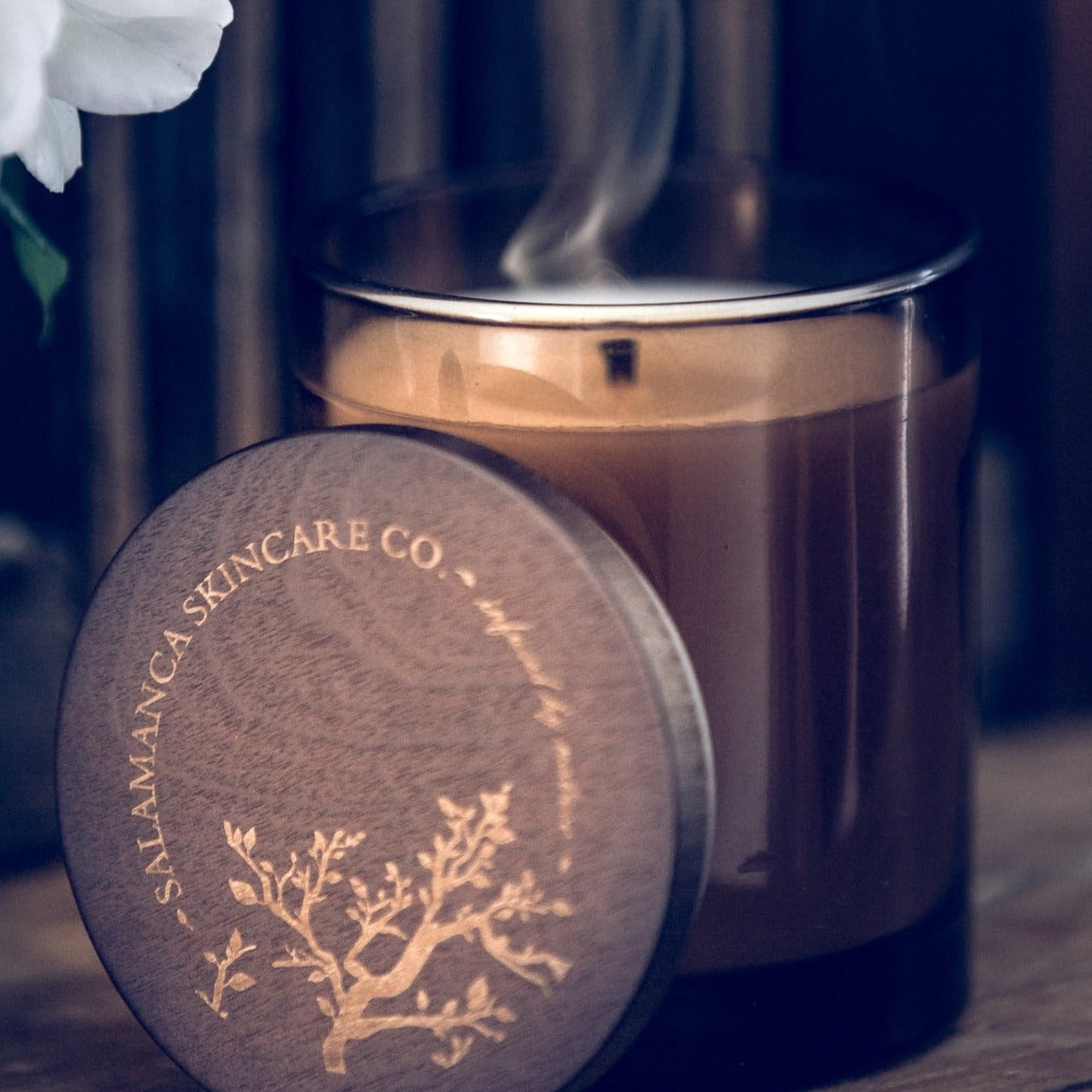Boost Your Living Area with Lavish Soy Candles and Home Fragrance
Wiki Article
From Wick to Wax: Recognizing the Chemistry Behind Soy Wax Candles and Their Environmental Impact
As we illuminate our areas with the cozy glow of candle lights, there exists a world of elaborate chemistry behind the apparently basic act of lighting a soy wax candle. The option in between soy and paraffin wax expands past plain aesthetics, diving right into the world of ecological impact and the really structure of the materials. Understanding the molecular framework of soy wax and its burning process sheds light on the exhausts released into our environments. Join us as we decipher the scientific ins and outs behind soy wax candle lights and explore their effects on our setting.Soy Wax Vs. Paraffin Wax
When comparing soy wax and paraffin wax for candle light production, it is necessary to understand the unique features and advantages of each material. Soy wax is a natural, sustainable resource originated from soybean oil, making it environmentally friendly and biodegradable - soy candles. On the other hand, paraffin wax is a result of petroleum refining, which raises concerns concerning its environmental impact and sustainabilitySoy wax candles burn cleaner and give off less residue compared to paraffin wax candles, making them a healthier selection for indoor air high quality. In addition, soy wax has a lower melting factor, enabling a longer-lasting candle that disperses scent better. Paraffin wax, on the other hand, tends to shed faster and less easily, possibly releasing unsafe chemicals right into the air.
From a sustainability viewpoint, soy wax is preferred for its biodegradability and renewable sourcing, aligning with the growing consumer choice for environmentally aware items. While paraffin wax has actually been a typical choice in candle making due to its affordability and convenience of use, the shift in the direction of green choices like soy wax is getting momentum in the market.
Chemical Structure of Soy Wax

Burning Refine in Soy Candles
The chemical make-up of soy wax directly influences the burning procedure in soy candle lights, influencing elements such as burn time, scent launch, and environmental effect. When a soy candle light is lit, the warmth from the fire melts the wax near the wick. This fluid wax is then formulated the wick because of capillary activity. As the fluid wax reaches the fire, it evaporates and goes through combustion. The burning procedure involves the vaporized hydrocarbons in the wax reacting with oxygen airborne to generate warmth, light, water vapor, and co2.
Check This Out
The combustion efficiency of soy candles is influenced by the pureness of the soy wax and the quality of the wick. Additionally, soy wax candle lights have a lower environmental influence contrasted to paraffin candle lights due to their eco-friendly and eco-friendly nature.

Environmental Advantages of Soy Wax

Taken into consideration a lasting alternative to typical paraffin wax, soy wax supplies significant environmental advantages that make it a prominent choice amongst eco-conscious consumers. Soy wax burns cleaner and creates much less soot than paraffin wax, contributing to much better interior air high quality and reducing the need for cleaning and maintenance. In general, the ecological benefits of soy wax straighten with the growing need for lasting and green products in the market.
Recycling and Disposal Factors To Consider
Reusing and appropriate disposal of soy wax candle lights play a critical role in maintaining environmental sustainability and minimizing waste in houses and communities. The initial action is to ensure that the candle light has actually shed entirely when it comes to reusing soy wax candle lights. This can be achieved by enabling the candle to burn until the wick is no much longer functional, and after that allowing the continuing to be wax cool and strengthen. When the wax has solidified, it can be meticulously gotten rid of from the container.
In terms of disposal, if recycling is not a choice, soy wax candles are eco-friendly and can visit this page be securely gotten rid of in the majority of house waste systems. However, it is constantly advised to contact regional recycling centers or waste monitoring services for particular standards on candle disposal to ensure appropriate handling and environmental management.
Verdict
Finally, the chemistry behind soy wax candle lights discloses their ecological advantages over paraffin wax candle lights. Soy wax, stemmed from soybean oil, burns cleaner and produces less residue when contrasted to paraffin wax. The burning process in soy candle lights is more reliable, leading to a much longer and more even burn. In addition, soy wax is eco-friendly and biodegradable, making it a more lasting option for candle production. Recycling and correct disposal of soy wax candle lights additionally add to their environmental impact.When contrasting soy wax and paraffin wax for candle light production, it is essential to recognize the distinctive features and benefits of each material (soy candles).Soy wax candles shed cleaner and discharge less residue contrasted to paraffin wax candles, making them a much healthier choice for interior air quality.Considered a sustainable alternative to typical paraffin wax, soy wax supplies notable environmental benefits that make it a popular selection among eco-conscious customers. Soy wax burns cleaner and creates much less soot than paraffin wax, adding to much better interior air high quality and minimizing the demand for cleaning and upkeep.In verdict, the chemistry behind soy wax candle lights exposes their ecological benefits over paraffin wax candles
Report this wiki page